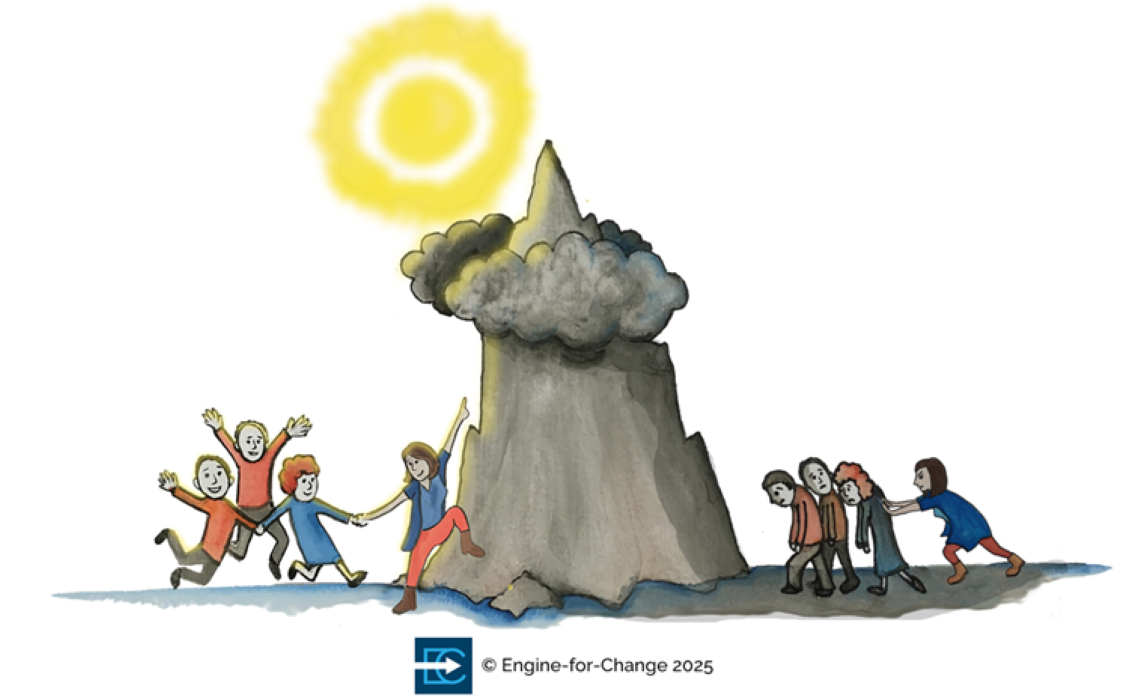From the breakneck speed of technological evolution to employee turnover, there’s a reason change management has become an entire field of study and profession: because, ironically, change is constant.
While those of us who work directly in the field recognize this and the value a strong change management function brings to an organization, we might not realize just how overwhelming this constant state of change can be for employees on the front lines. A whopping 96% of companies are in some phase of organizational transformation, whether it’s an M&A, business model adjustment, strategy shift or digital transformation. As a result, 85% of organizations are experiencing moderate to severe change fatigue, with the average employee experiencing 12 changes last year,
The truth is, change is stressful and exhausting, especially as the rate of change accelerates. This constant state of flux can cause employees to disengage or even resist and resent change, which is largely why fewer than one-third of planned changes are successful. And, for larger organizations, the success rates barely break 15%.
This high failure rate stems from the fact that, too often, organizations get so caught up in the technology, execution, and implementation of change that they forget the most important factor: people. In fact, the lack of an effective people strategy — one that prioritizes clear, effective communication — can derail even the most well-planned and well-intended change programs.
To maximize success, here’s how you can make communication a central part of your change management program:
- Communicate your strategy. Communication is often an afterthought for change management, but because it’s such a critical component, it must be part of the overall strategy. Start by clearly articulating your reasons for the change and your priorities, and how they tie into your overall business strategy. Define the “why” so employees understand the motives and intended results.
- Identify WIFM. Beyond defining your “why,” be sure to express it from the employees’ “what’s in it for me” perspectives. How will they benefit from the change? Personalizing the “why” will give employees a better understanding of how their participation directly impacts their futures and opportunities.
- Communicate continuously. Change is not a single event. It’s a journey, and every employee is at a different stage. For example, some may be long-time veterans of the organization, and others are brand new. You must devise messaging that addresses employees where they are in that journey. This is not the time for a one-size-fits-all approach — tailoring your message so it resonates with individuals will provide them with a clearer understanding of their role in the process.
- Consider the source. Communication philosopher Marshall McLuhan once said, “The medium is the message.” His assertion is that the medium you use to communicate is arguably as important, if not more so than the content itself. When it comes to communicating change, this is critical. How employees get information — what channels, formats, systems and even down to the timing — matters. Leveraging multiple media, such as video, audio or interactive media, and even printed materials ensure that employees get the message via the delivery that best suits their individual needs for understanding.
- Ensure leadership alignment. In any organization, people get information through a variety of means, not just your official company news. They discuss things with their peers and ask questions of their bosses. This means it’s critical that your message is aligned across all levels of leadership — you want your front-line supervisors to reinforce the same message employees are hearing from the c-suite. When there’s misalignment, employees get confused, frustrated and they don’t know whom to trust.
- Measure and iterate continuously. Certainly, you’ll want to measure quantitatively. Are people consuming the content you’ve provided? How often? Over what channels? But measuring qualitatively for sentiment is equally important. If they’re consuming, but not understanding, does the consumption even matter? Use surveys and feedback tools to gather their input on what they’ve learned, how it’s being implemented and how well their behavior aligns with the change you want to see. Make adjustments to your strategy, channels and messaging as needed based on this feedback throughout the process.
When communicating change, it’s important to recognize that employees are dealing with a lot all at once and that a constant state of change can be overwhelming. Cutting through the noise with messages that clarify the “why” delivered in the format and channels that work best for their understanding is critical for engagement, and ultimately, a successful change implementation.
The bottom line is change that’s implemented but not adopted is a failure, and people are at the heart of adoption. Making effective communication a foundational piece of your change management strategy can dramatically improve your likelihood of seeing successful, lasting improvements that deliver real business results.







